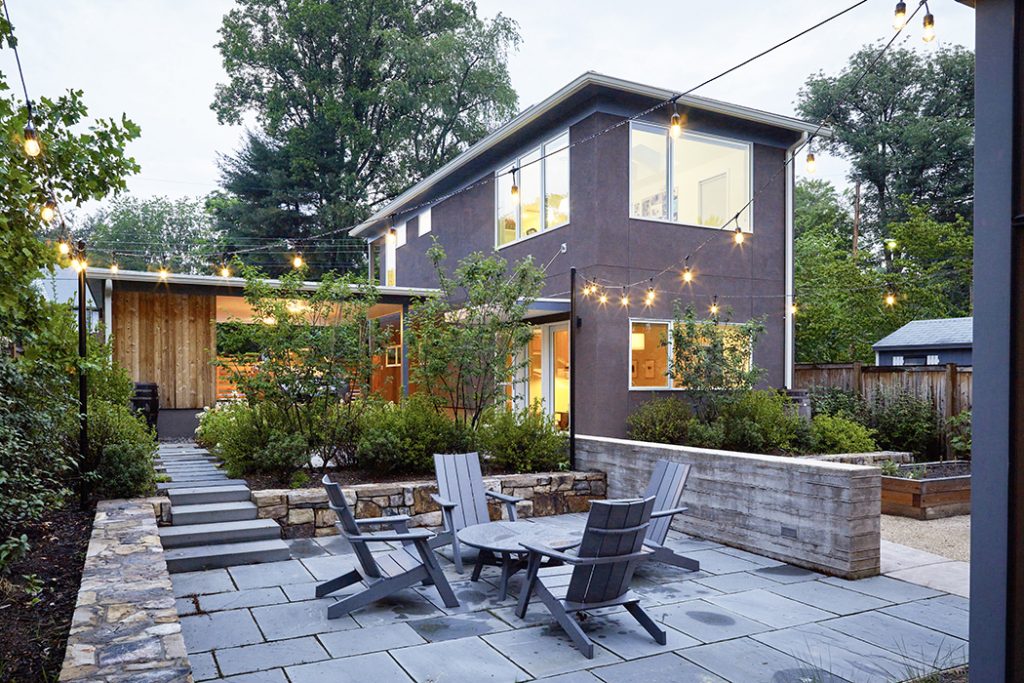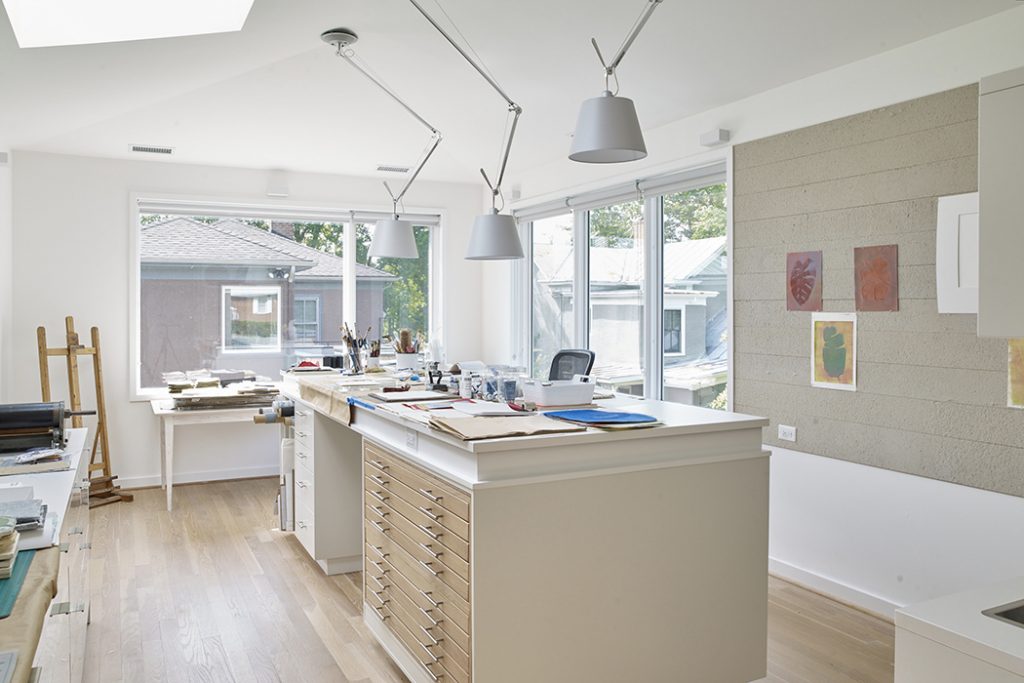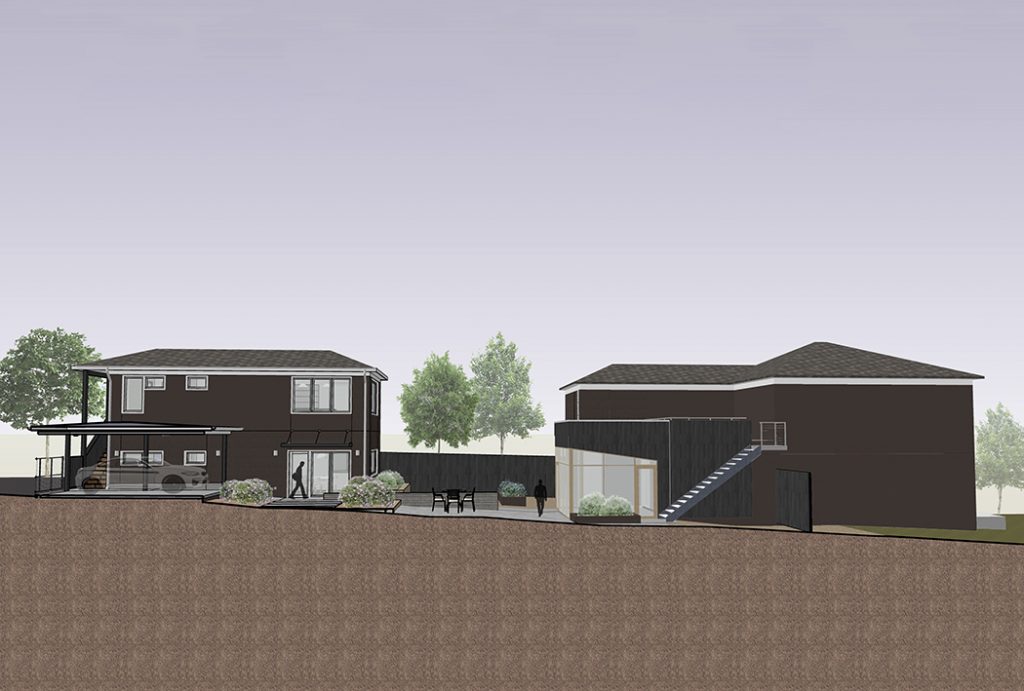For an artist moving to Charlottesville from the West Coast, dashed urban hopes led to a near-downtown dream renovation.
The homeowner quickly learned the loft-style living and working space she wanted wasn’t currently available, but she says she got lucky. She found a single-family home on Lexington Avenue that had already undergone a modern renovation and fit her minimalist style.
So what would it take to make the place her own? Only an ambitious three-phase project, working closely with Alloy Workshop, to first make the main living space move-in ready, then turn a halfhearted garage structure into an additional dwelling unit and artist’s workshop, and finally a return to the main house to modernize the kitchen and create a more open-concept floor plan.
“Working with others helps you tell a story you wouldn’t tell yourself,” Alloy Workshop’s Dan Zimmerman says. “There is an efficiency about the new space.”

Phase 1
Why break a renovation project into three phases? For Zimmerman and his new client, it was all about continuous livability. The bulk of the work would be in phase 2, but the first phase was imperative to bring the home up to the new owner’s standards before move-in. That meant renovating a bathroom and bedroom and turning another bedroom into a home office.
According to the homeowner and Zimmerman, phase 1 was all about the details—a panel in the bedroom bookshelves that slides down to reveal an otherwise hidden television, matching the new paneling to the existing fireplace style, adding a new window and door to close off the space.
Adding storage and using space effectively was also critical. “Under the stairs, it was all open,” Zimmerman says. “We created some much-needed storage, working around the return deep under the stairway. This might not jump out, but it was one of the more valuable things we did in a day-to-day sense.”

Phase 2
The second project stage required crafting three structures, all facing the street behind Lexington: a fully appointed guest apartment beneath an exhaustively designed art studio and astride an economical carport. The studio is the project’s Mona Lisa. Sitting on a 480-square-footprint, the studio opens from a stairway leading away from the home on a pithy office space, separated from the main artroom by a half bath.
The central studio space features details developed through collaboration between an obsessive artist and attentive architect. “Our secret is to ask questions,” Zimmerman says. “It is not to pretend like we know best, but instead ask questions of our end users. Then, we mix that with our experience and say, ‘Oh, that reminds me of this.’”

Clever details include counter-to-ceiling cabinets, which neatly hide art supplies, a massive central desk raised to standing height, homasote siding functioning as both bulletin board and soundproofing, three automated skylights on the space’s north side to avoid direct sunlight, custom flat drawers for paper-based artwork, and articulating light fixtures suspended from the ceiling. “You can move them so you can put the light exactly where you need it,” Zimmerman says.
Beneath the studio on the same footprint is an ADU suited for visiting youngsters and oldsters—namely the homeowner’s parents. It features a small kitchen, living/dining area, bathroom, and private bedroom. The neighboring carport features a modern gate design to enclose the property, and the building’s exterior is intended to match the main home, giving the impression that both structures were built at the same time. “Our driving goal was to make it look like it was always supposed to be there,” Zimmerman says.

Phase 3
Alloy focused on the rear of the main home in phase 3, opening the kitchen area and allowing it to flow into the outdoor space. The architects removed a wall to join the breakfast nook and newly renovated kitchen. “Once it is open, you can just see that is the way it should be,” Zimmerman says. “Our drive was not to do things that weren’t useful.”
Landscaping was a significant part of the project, as well, and the team completed an extensive outdoor project about a year after phase 3 concluded. Alloy and the homeowner contracted with a landscape architect with whom they were both familiar, and the result was a patio and backyard that seamlessly linked the main home and new structure.
“We knew that was coming, so we did everything else with that in mind,” the homeowner says. “We initially wanted a slightly different design—a covered walkway from the garage to the house—and couldn’t do it, but in the end, I think it actually turned out better.”
Alloy and the homeowner built as much under roof as is allowed by local regulations, but the goal was always to do so “tastefully.”
“Going into it, I didn’t know what my style was, really,” the homeowner says. “But I am detail-oriented, and I am a pretty highly organized person. It all has a practical orientation.”
